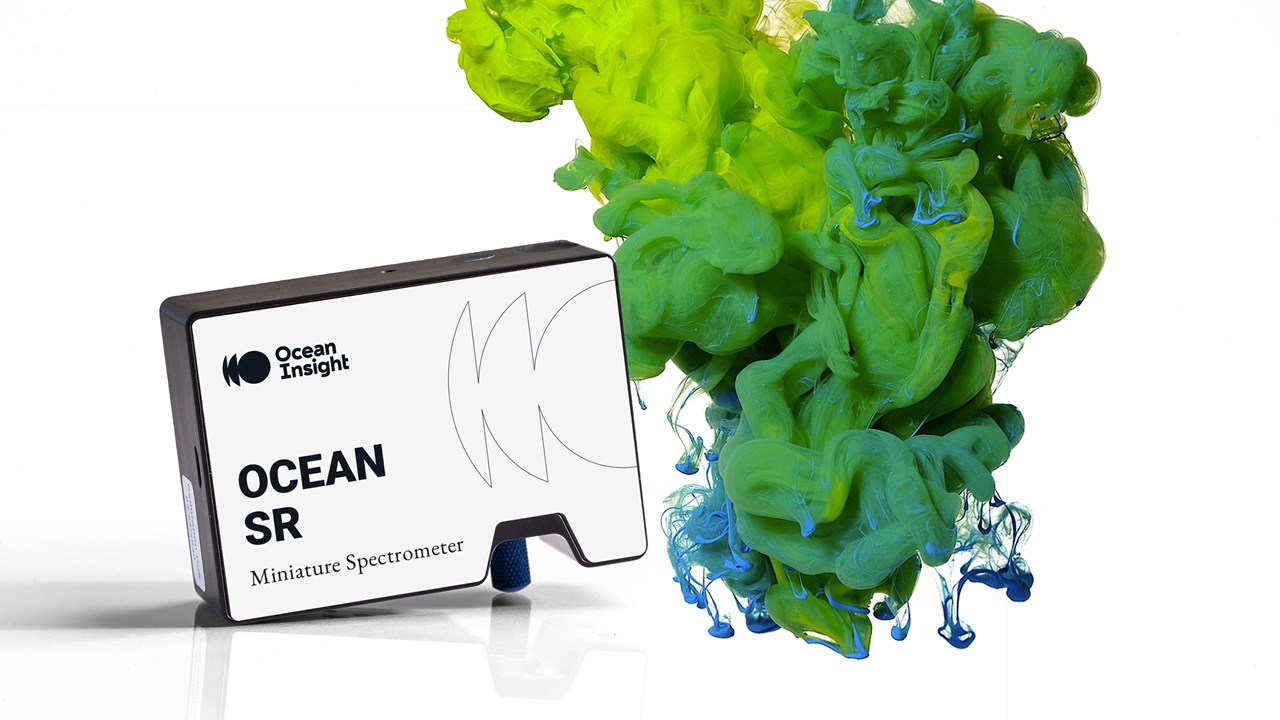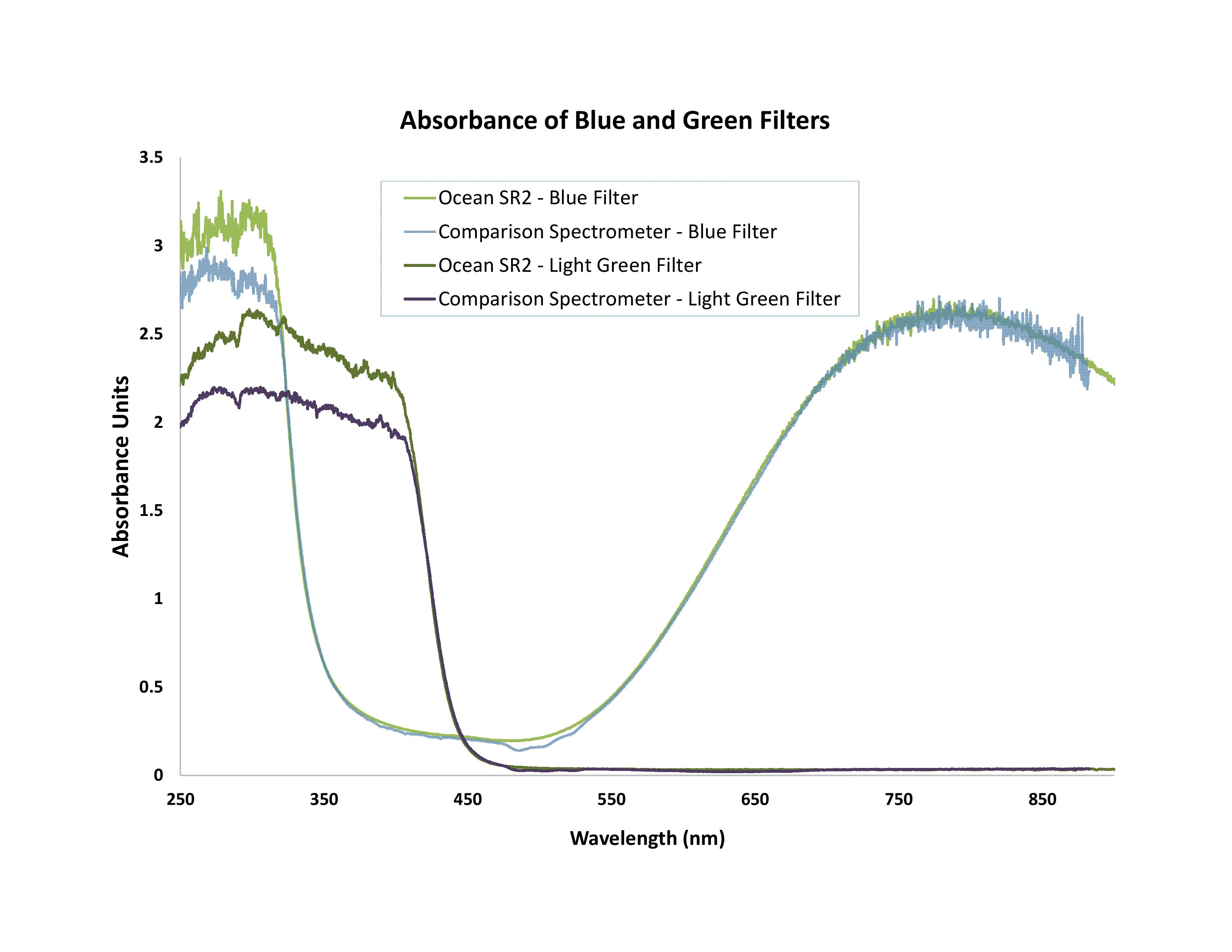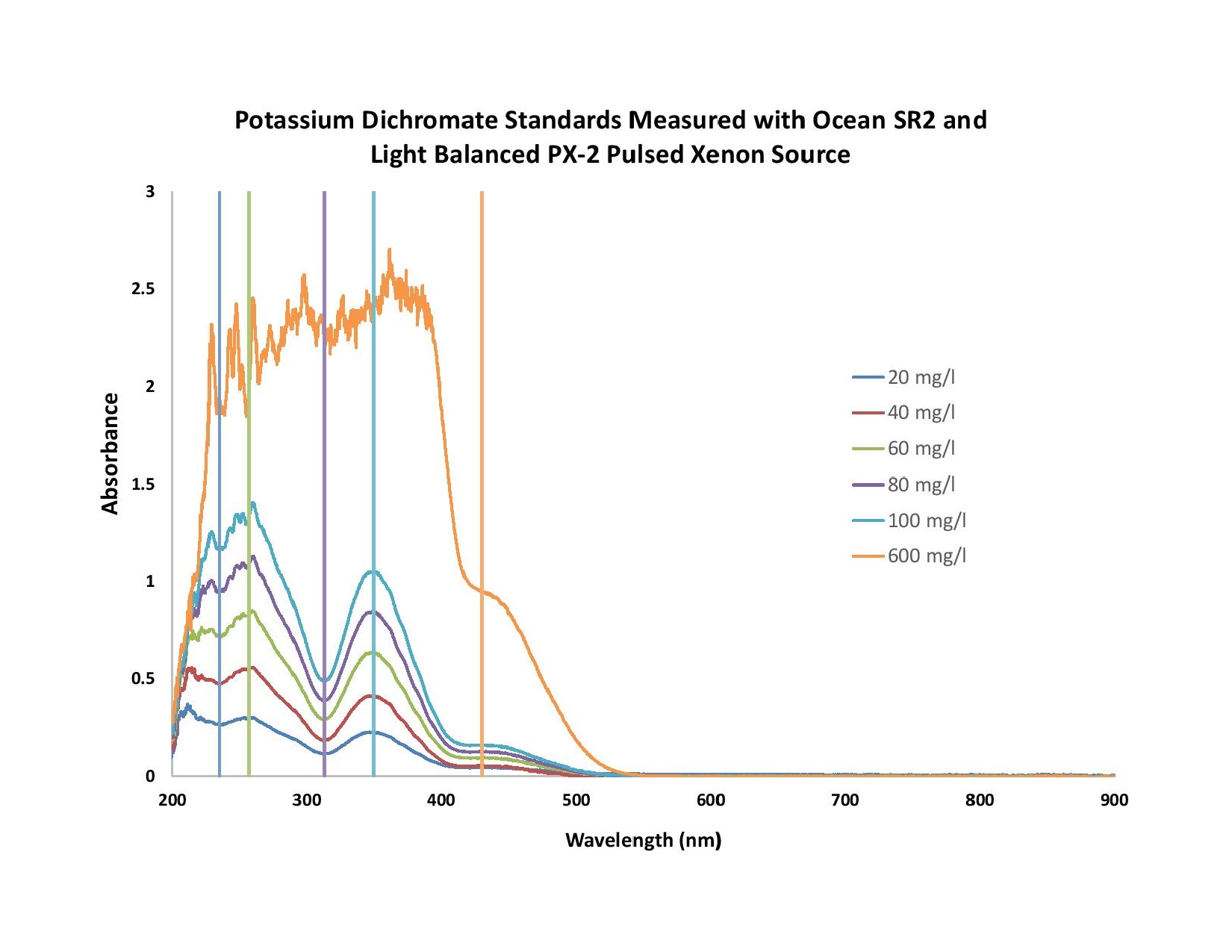Subscribe to Our Blog
Receive updates from our team as we share application notes, customer spotlights, educational tools, spectroscopy how-to’s, and more.

With excellent signal-to-noise ratio performance and high-speed spectral acquisition, the Ocean SR2 spectrometer is ideal for applications such as absorbance of optical filters and potassium dichromate standards.
Since the introduction of the first commercially viable modular spectrometers in the early ‘90s, successive generations of these versatile instruments have demonstrated significant improvement across key performance indicators including signal to noise ratio (SNR), optical resolution, scan rates, stray light and linearity.
The Ocean SR2 spectrometer is at the vanguard of the newest generation of modern modular spectrometers. The spectrometer has a proprietary linear CCD-array detector, enhanced electronics that provide high-speed spectral acquisition (integration times to 10 µs), and excellent SNR (380:1) performance for absorbance measurements, plasma monitoring and other applications. Here are some examples of Ocean SR2 performance for absorbance measurements.
Using an Ocean SR2 spectrometer with a DH-2000-BAL deuterium-tungsten halogen light source and an optical filter holder, we measured various combinations of optical color, balancing and UV blocking filters. When compared with a similar type of spectrometer for the same measurements, the Ocean SR2 demonstrated higher absorbance values, suggestive of lower stray light performance; and better SNR at longer wavelengths, the result of more balanced spectral sensitivity across the spectral range (Figure 1).

Figure 1. When blue filters are measured, the lower noise level of the Ocean SR2 delivers better SNR at longer wavelengths than a comparable spectrometer.
To ensure best results for similar measurements, be sure to warm up the light source for the recommended amount of time (up to 30 minutes in some cases). Light source output will continue to change very slightly until the source is in thermal equilibrium, affecting measurements. Also, never turn off the light source or disconnect fibers to take a dark measurement. Instead, block the light source at its origin, or at the filter slot in the sample holder. Make sure the object used will block 100% of the light; metal works well.
Potassium dichromate is a crystalline solid typically used as an oxidizing agent. In this instance, we used potassium dichromate solution standards to compare Ocean SR2 measurements to the calibrated absorbance wavelengths at 235 nm, 257 nm, 313 nm, 350 nm and 430 nm.
Our setup comprised an Ocean SR-2 UV-Visible spectrometer with 50 µm slit, a PX-2 pulsed xenon light source balanced using a filter holder and diffuser, the 1 cm pathlength Square One cuvette holder, and a pair of 600 µm solarization-resistant optical fibers. The Ocean SR2 demonstrated high accuracy, especially at higher concentration measurements (Figure 2).

Figure 2. In these measurements, the vertical lines represent calibrated absorbance wavelengths at 235 nm, 257 nm, 313 nm, 350 nm and 430 nm.
Generally, with absorbance measurements it’s best to set the spectrometer integration time so that the reference spectrum peaks at 80%-90% of the full scale of counts. This lets you take advantage of the full dynamic range of the spectrometer, which improves signal-to-noise performance. Also, because the Ocean SR2 spectrometer has a balanced output across its entire wavelength range, users can avoid saturating certain parts of the spectrum -- and having to make potentially unwelcome measurement trade-offs.
In the context of absorbance measurements, spectrometer SNR can be the difference between excellent results and something less than that. We’ve observed how the Ocean SR2 outperforms a comparable spectrometer for absorbance measurements, especially in the UV. This is one reason why the Ocean SR2 is appealing for applications such as molecular diagnostics.
For context, SNR is the signal intensity divided by the noise intensity at a certain signal level, which means SNR can vary from measurement to measurement. Since system noise typically increases as a function of signal due to photon noise, the SNR function is a plot of individual SNR values versus the signal at which they were obtained.
Ocean Insight reports SNR for its spectrometers as the maximum possible SNR value measured at detector saturation. The SNR response curve for each pixel is assumed to be the same.
SNR can be improved by using different types of signal averaging, as we did for most of our measurements here. For time-based averaging, the SNR will increase by the square root of the number of spectral scans used. For example, an SNR of 380:1 – the SNR for the Ocean SR2 -- will become 3800:1 if 100 scans are averaged. For spatially based averaging (boxcar), the SNR will increase by the square root of the number of pixels averaged.
While the Ocean SR2 is an excellent option for absorbance measurements, its versatility extends to other applications. For example, for irradiance calibrated measurements like solar irradiance, Ocean SR2 is able to detect high-resolution spectral peaks as well as less obvious features in the spectrum. The spectrometer is also useful for measuring high-intensity light sources and high-energy plasmas.
Options available
Deuterium-Tungsten Halogen Combination Sources are high output, high stability light sources for UV, Visible and NIR applications.
Prices From $4,176.00
Options available
Square One General Purpose Cuvette Holders are available for absorbance and fluorescence sampling requirements.
Prices From $713.00
Options available
Solarization Resistant Fibers (200 - 1100 nm)
Prices From $165.00
From UV to NIR wavelengths, absorbance measurements provide information about the chemical composition of materials in all states of matter. Learn how absorbance can be used to identify substances or measure the concentration of a molecule.
Read how a modular, HR series high resolution spectrometer setup monitored changes in argon plasma emission after the introduction of different gases to a plasma chamber.

Receive updates from our team as we share application notes, customer spotlights, educational tools, spectroscopy how-to’s, and more.